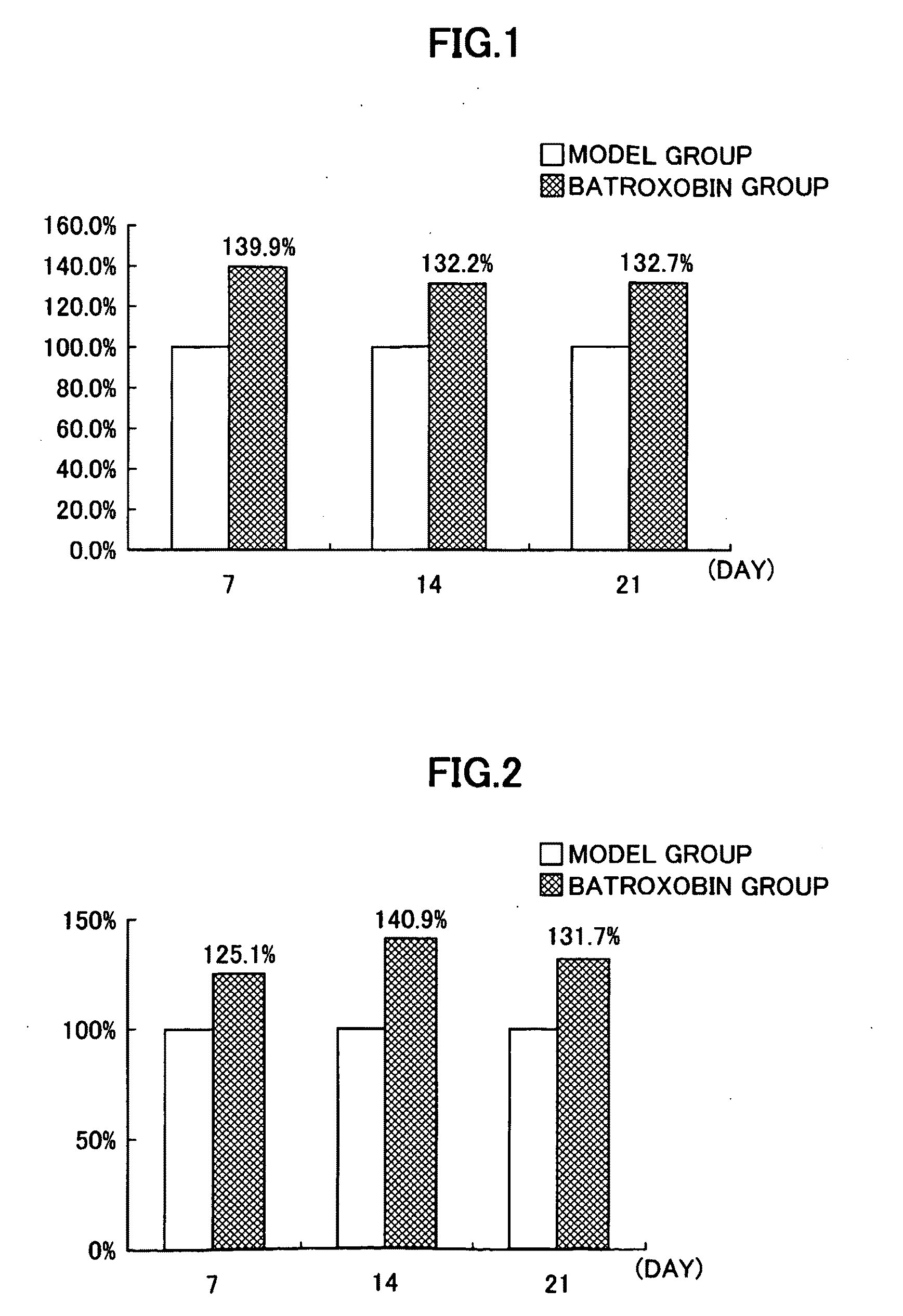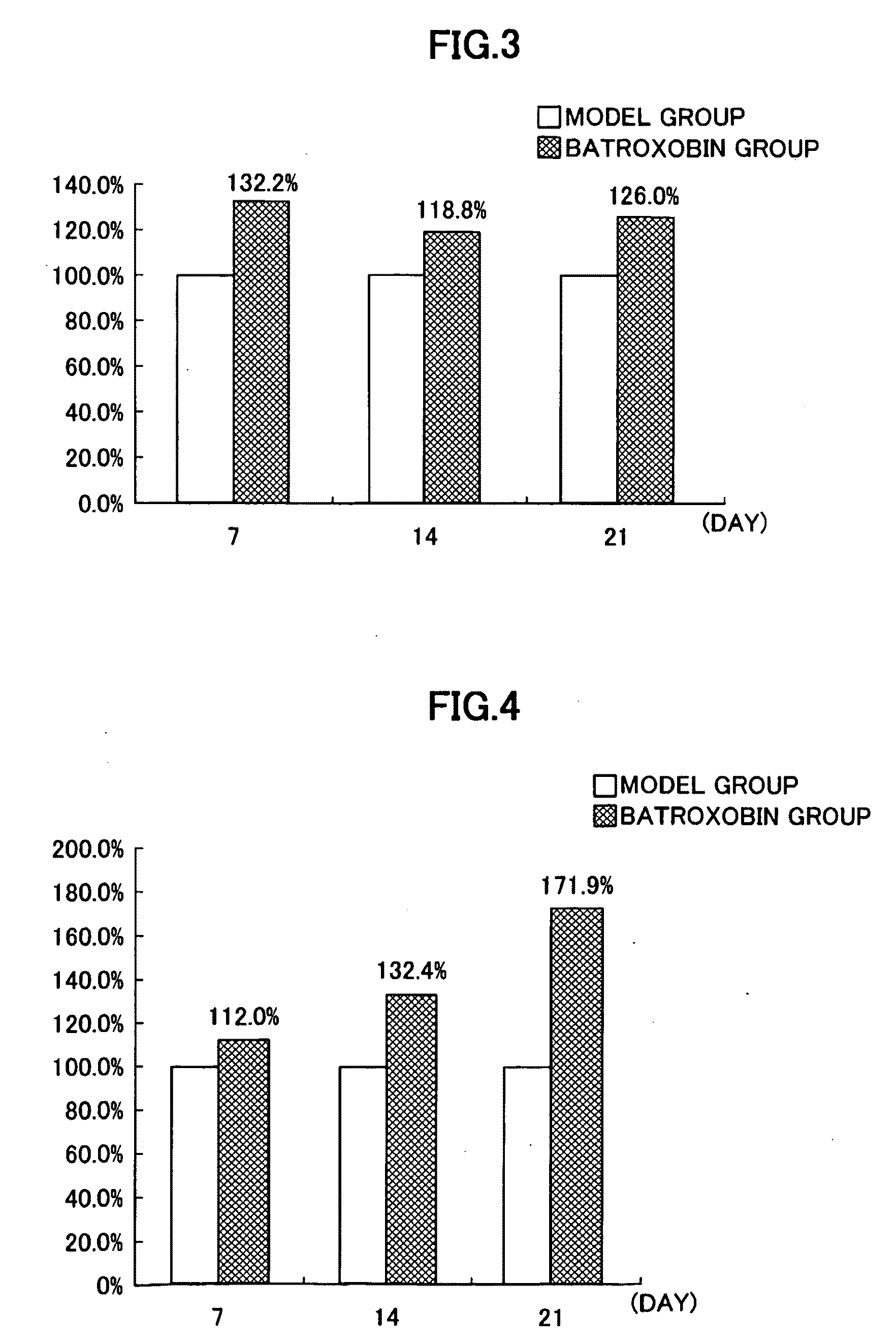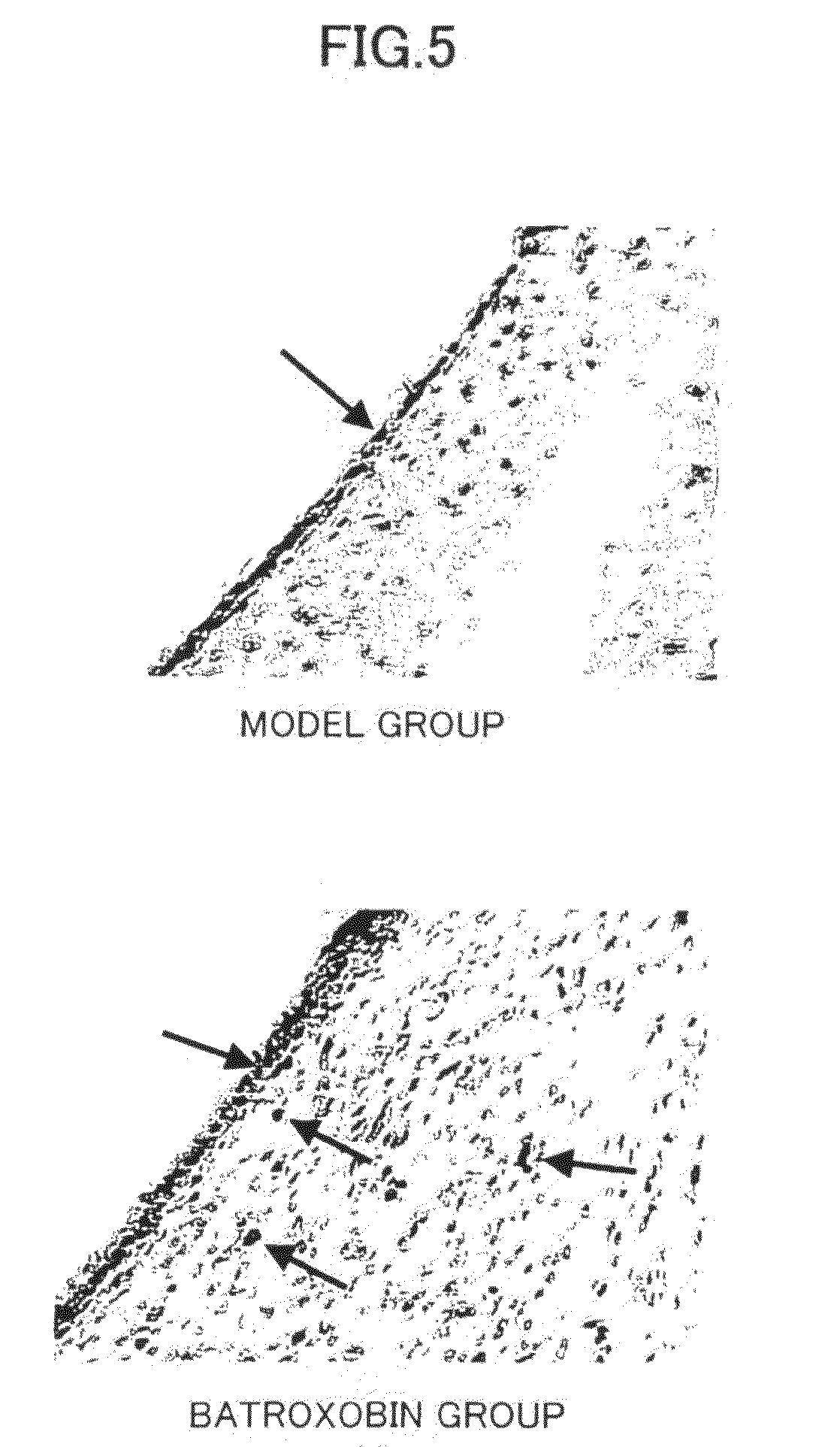Activating agent of stem cells and/or progenitor cells
- Summary
- Abstract
- Description
- Claims
- Application Information
AI Technical Summary
Benefits of technology
Problems solved by technology
Method used
Image
Examples
example 1
Effect of Batroxobin on Activation of Cord Blood-Derived CD34-Positive Mononuclear Cells
[0091]In the present example, the effect of batroxobin on activation of cord blood-derived CD34-positive mononuclear cells was evaluated in vitro.
[0092]Furthermore, those cells present in cord blood corresponding to CD34-positive mononuclear cells are known to consist of vascular EPCs and mesenchymal stem cells (Murohara T et al.: Transplanted cord blood-derived endothelial precursor cells augment postnatal neovascularization. J Clin Invest 105:1527-1536, 2000). Thus, the human cord blood-derived CD34-positive mononuclear cells evaluated in the present example can be said to be vascular EPCs and mesenchymal stem cells.
Experimental Method:
(1) Collection of Human Cord Blood Mononuclear Cells
[0093]Normal pregnancies with full term birth were selected and 40˜60 ml of cord blood was collected from the umbilical cord and placenta using heparin (20˜30 U / ml) as a coagulant. The collected cord blood was m...
example 2
[0101]Activation of CD34-Positive Cells, CD34-Positive / CD31-Positive Cells and VE Cadherin-Positive Cells in Peripheral Blood of Lower Limb Deep Vein Thrombosis Patients, and Effects of Batroxobin on Functional Recovery of Damaged Tissue in Lower Limb Deep Vein Thrombosis Patients
[0102]In the present example, batroxobin was administered to patients with lower limb deep vein thrombosis (lower limb DVT), a kind of vascular disease, to evaluate the effects of batroxobin on activation of CD34-positive cells, CD34-positive / CD31-positive cells and VF, cadherin-positive cells in the peripheral blood, and the effects of batroxobin on regeneration of vessels damaged by thrombi.
[0103]Furthermore, those cells present in peripheral blood which are considered to be CD34-positive mononuclear cells are known to be vascular EPCs and mesenchymal stem cells (Zhao Y et al.: A human peripheral blood monocyte-derived subset acts as pleuripotent stem cells. Proc Natl Acad Sci USA 100: 2426-31, 2003). Thu...
example 3
Effects of Batroxobin on Activation of Neural Stem Cells and / or Neural Progenitor Cells, and Recovery of Neural Function in a Cerebral Ischemia / Reperfusion Injury Model
[0127]In this example, the effects of batroxobin on activation of neural stem cells and / or neural progenitor cells, and recovery of neural function were evaluated using a rat cerebral ischemia / reperfusion injury model.
Experimental Method:
(1) Animals
[0128]Male Sprague-Dawley rats with age of 12 weeks and weight of 250˜280 g (Shanghai Animal Center, Chinese Academy of Medical Sciences, Shanghai, China) were used in the experiment after acclimating for 1 week.
(2) Establishment of Cerebral Ischemia / Reperfusion Injury Model
[0129]A middle cerebral artery occlusion model was first established in compliance with the method of Longa E Z et al. (Longa E Z et al.: Reversible middle cerebral artery occlusion without craniectomy in rats. Stroke 20:84-91, 1989). More specifically, 0.36 g / kg of 10% chloral hydrate (Shencheng Chemica...
PUM
| Property | Measurement | Unit |
|---|---|---|
| molecular weight | aaaaa | aaaaa |
| molecular weight | aaaaa | aaaaa |
| total volume | aaaaa | aaaaa |
Abstract
Description
Claims
Application Information
 Login to View More
Login to View More - R&D
- Intellectual Property
- Life Sciences
- Materials
- Tech Scout
- Unparalleled Data Quality
- Higher Quality Content
- 60% Fewer Hallucinations
Browse by: Latest US Patents, China's latest patents, Technical Efficacy Thesaurus, Application Domain, Technology Topic, Popular Technical Reports.
© 2025 PatSnap. All rights reserved.Legal|Privacy policy|Modern Slavery Act Transparency Statement|Sitemap|About US| Contact US: help@patsnap.com



